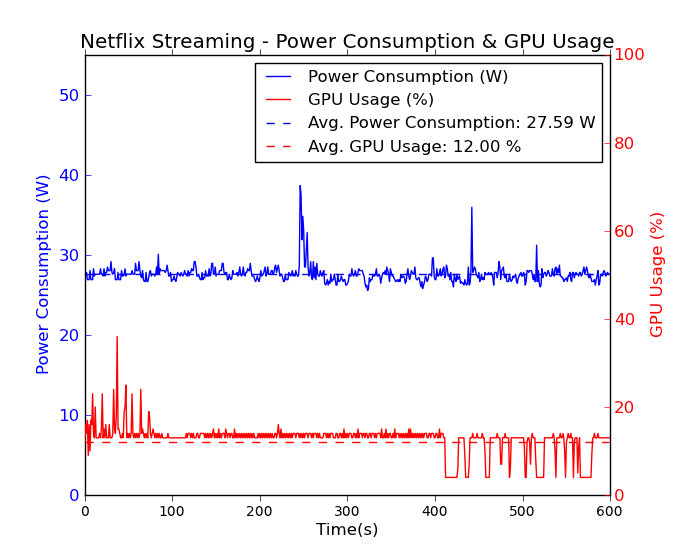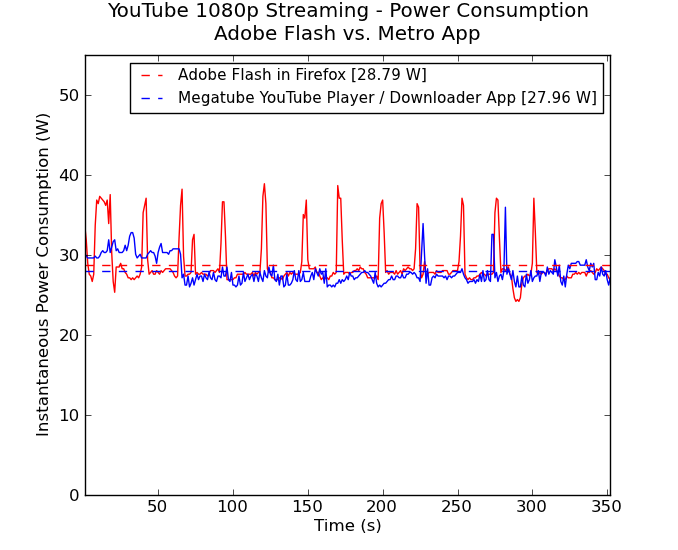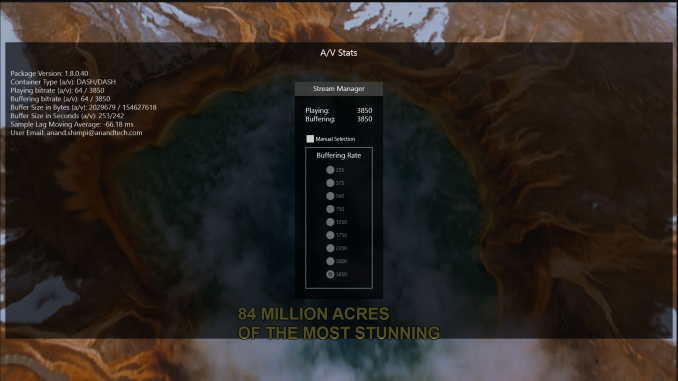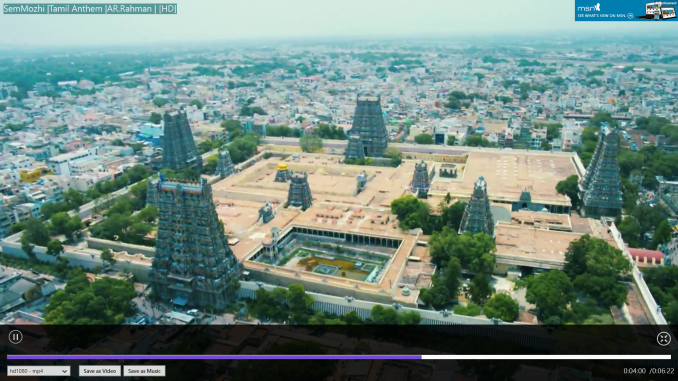Intel's Haswell - An HTPC Perspective: Media Playback, 4K and QuickSync Evaluated
by Ganesh T S on June 2, 2013 8:15 PM ESTNetwork Streaming Performance - Netflix and YouTube
The move from Windows 7 to Windows 8 as our platform of choice for HTPCs has made Silverlight unnecessary. The Netflix app on Windows 8 supports high definition streams (up to a bit rate of 3.85 Mbps for all ISPs, more if the ISP is Super HD enabled) as well as 5.1-channel Dolby Digital Plus audio on selected titles.
It is not immediately evident whether GPU acceleration is available or not from the OSD messages. However, GPU-Z reported an average GPU utilization of 12% throughout the time that the Netflix app was playing back video. The average power consumption is around 28 W.

Unlike Silverlight, Adobe Flash continues to maintain some relevance right now. YouTube continues to use Adobe Flash to serve FLV (at SD resolutions) and MP4 (at both SD and HD resolutions) streams. YouTube's debug OSD indicates whether hardware acceleration is being used or not.
Windows 8 has plenty of YouTube apps. We chose the Megatube YouTube Player / Downloader which allows for stream selection. For our power measurement experiments, we chose the 1080p MP4 stream.
However, we can't be sure whether hardware acceleration is being used with the app, as there is no debug OSD. However, a look at the power consumption numbers reveal that both approaches consume less than 30 W on an average. The difference in the caching of the stream is also visible in this graph, with the Flash approach preferring to download data in bursts while the app prefers to download the whole stream as quickly as possible. Streaming was done over Wi-Fi.

Comparing these numbers with what was obtained using the i3-3225 in a passive build shows that the Haswell build manages to be more efficient even when active cooling (with one big Antec Skeleton chassis fan and a CPU fan) is employed.
On the image quality front, Haswell doesn't seem to change anything here vs. Ivy Bridge. Performance was acceptable before, and it continues to be so here. The big difference is really the additional power savings.













95 Comments
View All Comments
Penti - Monday, June 3, 2013 - link
Plus old hardware is old and not available anymore.phoenix_rizzen - Monday, June 3, 2013 - link
Quad-core Athlon-II, CPU fan configured to spin down as needed, case fan unplugged, SSD, nVidia 210 GPU (fanless) running Linux + XBMC. Sub-$300 CDN.Why would you need an i7 for an HTPC? Why would you need a skookum dGPU? And why would you be transcoding on the HTPC? The HTPC should just play the movies on the screen that's attached to it, nothing more. The movies shouldn't reside on the HTPC, and you should be plugging in mobile devices to transfer movies to/from them. That's what the skookum "server" in the other room is for. :)
solnyshok - Wednesday, October 23, 2013 - link
This is quite old thread, but I wanted to add, that it strikes me that my htpc usage model is totally different from the one you described. I use Atom based htpc (dualcore 2.1GHz) which is on 24x7, doing playback to HDMI 1080p tv and torrents and file serving for home network. it is up to 10w and fanless. No MadVR though.benamoo - Monday, June 3, 2013 - link
I'm wondering why no one mentioned the upcoming Ouya console and possibly many more ARM based media player boxes coming to the market next year.I've been an HTPC user for years now, but it's not worth it anymore to invest in such a costly/bulky/noisy system simply for HTPC tasks. Sure, repurposing an old system is great, actually that's what I've been doing, but building a new one from scratch (especially with a Core i7) seems to be a huge waste of money IMO.
I have high hopes for Ouya (and similar ARM/Android powered boxes). Hopefully the experience would be so good that we can finally rid ourselves of this Wintel duopoly.
Don't get me wrong. I still believe an HTPC is the best media center box out there. But these boxes can offer very similar results with a fraction of the cost.
rennya - Wednesday, June 5, 2013 - link
Mainly because those ARM players has crappy GUI and limited support for file formats and containers? Try playing a Matroska file that used segment linking, has a 10-bit H.264 1080p24 video stream with at least 10Mb bitrate, a DTS-HD MA 7.1 track and also a fully-styled SSA subtitle track and you will see that Ouya console crashed and burned while doing so.sireangelus - Tuesday, June 4, 2013 - link
Can someone explain to me why they don't get themselves a laptop with some remote functionality and use that as an htpc? shouldn't it be less expensive, have a lower tdp and be more useful?HisDivineOrder - Tuesday, June 4, 2013 - link
I sincerely hope they fixed the 23.976 bug in the IGP that is included with Bay Trail. If they did, there's your HTPC of choice for anyone not obsessed with MadVR.halbhh2 - Tuesday, June 4, 2013 - link
Such a careful review makes me want to have the new A10 6700 put through the same paces.majorleague - Wednesday, June 5, 2013 - link
Here is a youtube link showing 3dmark11 and windows index rating for the 4770k 3.5ghz Haswell. Not overclocked.Youtube link:
http://www.youtube.com/watch?v=k7Yo2A__1Xw
eio - Saturday, June 22, 2013 - link
according to the snapshots, to my eyes, the QSV quality of HD4600 is significantly better than HD4000 & x264...